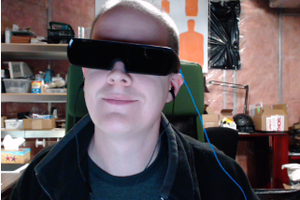An old saying from my mother was, "In for a penny, in for a pound". Since I have gotten accustomed to Hackaday.io as a workflow blog, I decided to put up another of my ongoing projects. This one grew out of my frustration with the expense, inaccuracies, and closed approach of various personal "Weather Stations". I have owned several Davis versions and, most recently, a Peet Bros. unit.
Afer one repair of the Peet Bros. temperature/humidity sensor and later when the display system died the other day, I had my fill and started building my own as a replacement. This was about 18 months ago, so this is another in medias res project. (Note to my high school English teachers -- see, I was paying attention even though you didn't think I was)
That means you will need to overlook the scattered approach to the first few postings as they were a data dump of that happened up to 2016.
Sadly I did not have anything ready on this for Hurricane Harvey. Even my new calibrated tipping bucket rain gauge failed. The old school approach was the 18ft swimming pool at the bunkhouse. It was empty on Friday Aug 22 and full to the 42 inch line on Tue Aug 26. Oh well, I will have it ready for the next one.
 sparks.ron
sparks.ron

 Audrey Robinel
Audrey Robinel
 Nevyn
Nevyn
 Minimum Effective Dose
Minimum Effective Dose
 Danie Conradie
Danie Conradie
I am having second thoughts about not doing this on WiFi. I will post to the log soon and explain my new approach. In essence the ESP8266 is a game changer for WiFi coupled with Ethernet. I now plan to do both and use an MQTT publish method for data transfer.